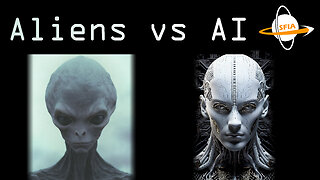6. LOVEVOL - Calendar as Matrix vs outlook . see description
1. download: https://workupload.com/file/tsCMJgNXbXa
2. unzip
https://www.youtube.com/watch?v=0t6nHhk-ZcE
3. open and start
login: human
password: human
The first steps :
https://www.youtube.com/watch?v=2WUnN4znbL8&t=4s
www.lov111vol.com
Calendar FREE FOR ONE
wiki
A calendar is a system of organizing days. This is done by giving names to periods of time, typically days, weeks, months and years. A date is the designation of a single and specific day within such a system. A calendar is also a physical record (often paper) of such a system. A calendar can also mean a list of planned events, such as a court calendar or a partly or fully chronological list of documents, such as a calendar of wills. Calendar as Matrix vs outlook 2021
Periods in a calendar (such as years and months) are usually, though not necessarily, synchronized with the cycle of the sun or the moon. The most common type of pre-modern calendar was the lunisolar calendar, a lunar calendar that occasionally adds one intercalary month to remain synchronized with the solar year over the long term.
Etymology
The term calendar is taken from kalendae, the term for the first day of the month in the Roman calendar, related to the verb calare 'to call out', referring to the "calling" of the new moon when it was first seen.[1] Latin calendarium meant 'account book, register' (as accounts were settled and debts were collected on the calends of each month). The Latin term was adopted in Old French as calendier and from there in Middle English as calender by the 13th century (the spelling calendar is early modern).
History
Main article: History of calendars
Further information: Week, Calendar epoch, Month, Lunisolar calendar, and Computus
Equinox seen from the astronomic calendar of Pizzo Vento at Fondachelli Fantina, Sicily
The course of the sun and the moon are the most salient regularly recurring natural events useful for timekeeping, and in pre-modern societies around the world lunation and the year were most commonly used as time units. Nevertheless, the Roman calendar contained remnants of a very ancient pre-Etruscan 10-month solar year.[2]
The first recorded physical calendars, dependent on the development of writing in the Ancient Near East, are the Bronze Age Egyptian and Sumerian calendars.[3]
During the Vedic period India developed a sophisticated timekeeping methodology and calendars for Vedic rituals.[4] According to Yukio Ohashi, the Vedanga calendar in ancient India was based on astronomical studies during the Vedic Period and was not derived from other cultures.[5]
A large number of calendar systems in the Ancient Near East were based on the Babylonian calendar dating from the Iron Age, among them the calendar system of the Persian Empire, which in turn gave rise to the Zoroastrian calendar and the Hebrew calendar.[citation needed]
A great number of Hellenic calendars were developed in Classical Greece, and during the Hellenistic period they gave rise to the ancient Roman calendar and to various Hindu calendars.[6]
Calendars in antiquity were lunisolar, depending on the introduction of intercalary months to align the solar and the lunar years. This was mostly based on observation, but there may have been early attempts to model the pattern of intercalation algorithmically, as evidenced in the fragmentary 2nd-century Coligny calendar.
The Roman calendar was reformed by Julius Caesar in 46 BC.[7] His "Julian" calendar was no longer dependent on the observation of the new moon, but followed an algorithm of introducing a leap day every four years. This created a dissociation of the calendar month from lunation.
The Islamic calendar is based on the prohibition of intercalation (nasi') by Muhammad, in Islamic tradition dated to a sermon given on 9 Dhu al-Hijjah AH 10 (Julian date: 6 March 632). This resulted in an observation-based lunar calendar that shifts relative to the seasons of the solar year.
-
 17:02
17:02
PARAGRAPHIC
21 hours agoThe Oldest American Wheat is Coming Back | PARAGRAPHIC
3.75K11 -
7:02
Morgonn
21 hours agoDating Advice from COLLEGE STUDENTS??? Only Fans? Trans-Women? TELL ALL!!!
12.6K49 -
 22:59
22:59
JoBlo Originals
16 hours agoWhat Happened To Indiana Jones And The Dial Of Destiny?!
16.9K9 -
 1:21:42
1:21:42
MTNTOUGH Fitness Lab
23 hours agoCliff Gray: Escaping the 9 to 5 and Thriving in the Backcountry
17.2K1 -
 9:03
9:03
Adam Does Movies
1 day agoBoy Kills World Movie Review - Too Quirky For Mainstream Audiences?
20.5K1 -
 16:36
16:36
Misha Petrov
16 hours agoINSANE Protestors Are Taking Over College Campuses
9.4K40 -
 26:41
26:41
Science & Futurism with Isaac Arthur
1 day agoAliens vs AI
13.2K15 -
 32:22
32:22
intheblues
1 day agoMy Entire Electric Guitar Collection
22.4K6 -
 22:25
22:25
TheTapeLibrary
23 hours agoWhen They Take Over Your Television (Haunting Tales Of Broadcast Signal Intrusions)
31.1K17 -
 1:28:13
1:28:13
ReasonTV
17 hours agoJesse Singal: Should Kids Medically Transition?
36.2K14